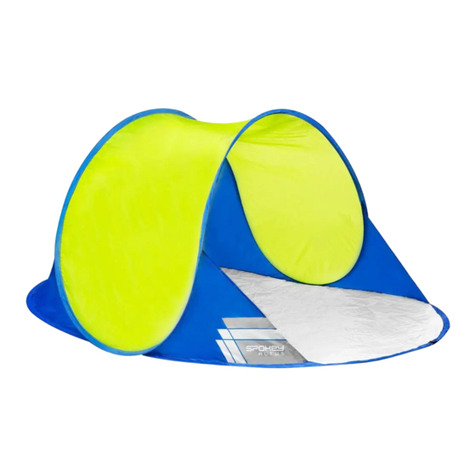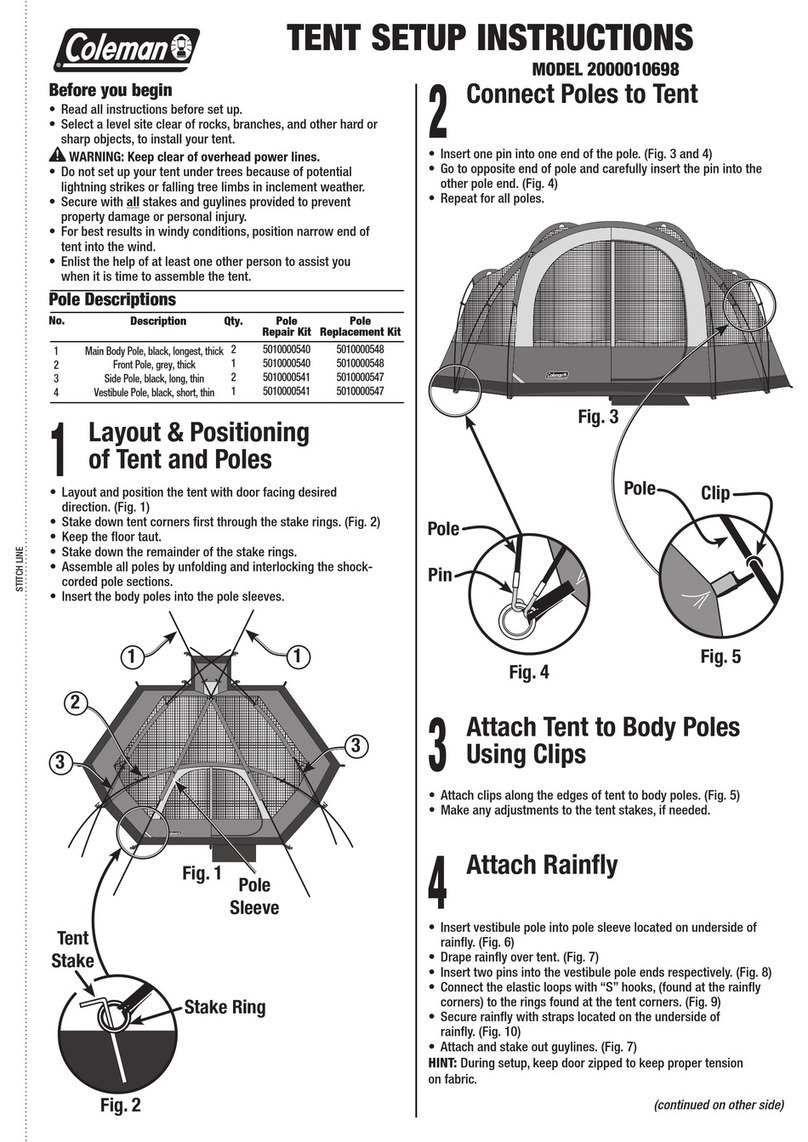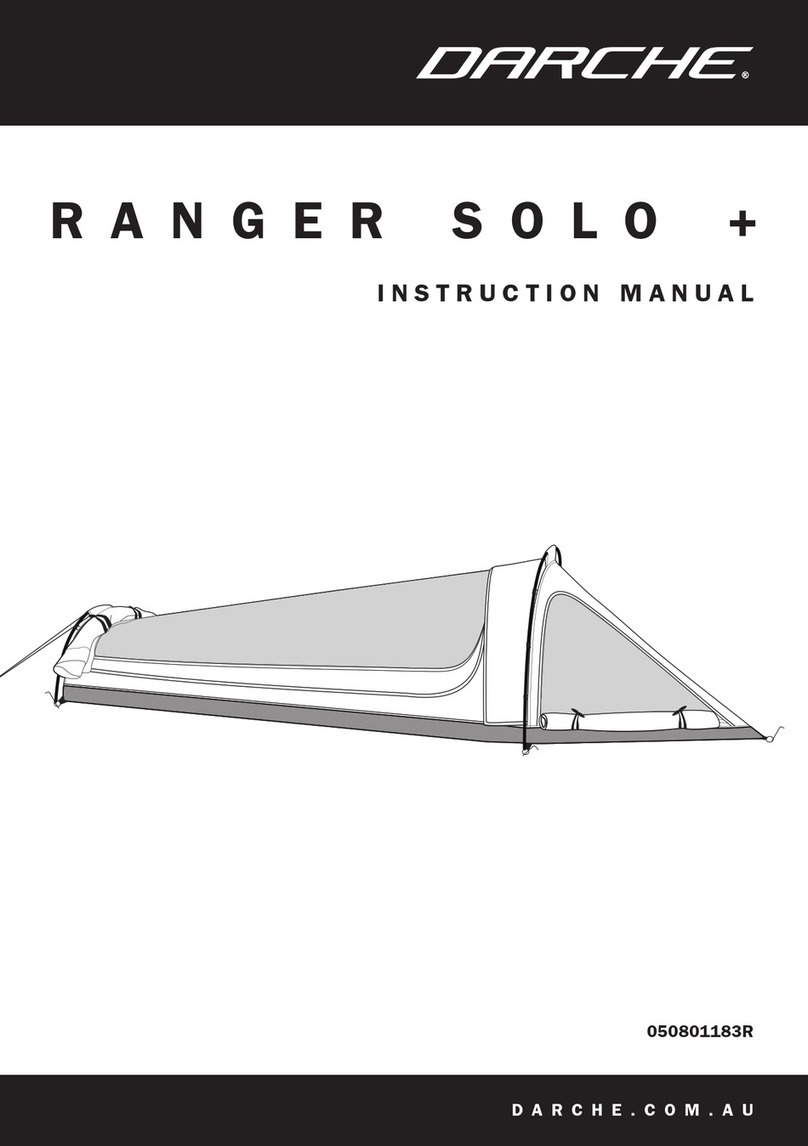TERRA NOVA Wild Country Zonda 8EP User manual

Zonda 8EP Instructions
Thank you for buying a Wild Country Zonda 8EP tent and we hope you have fun using it. Please read
these instructions carefully before you pitch your tent for the first time and keep them in a safe
place for future reference. If used correctly and with care your tent should give you years of trouble
free use. Top Tip - We would recommend that you take out insurance against storm and accidental
damage as these are not covered by the guarantee.
The first time you use the tent
If possible we would recommend that you do a practice pitch before heading off on your camping
holiday for the first time. This will give you the opportunity to learn the best way to pitch and then
pack away your tent and also check that all the component parts are there. Top Tip –don’t forget to
take the pegs and pump with you!
Please also consider the weather conditions before using the tent. This tent is designed to be used in
moderate wind and weather conditions so either do not pitch the tent or take it down in strong
winds or adverse weather such as hail or snowfall. Please note this tent is not designed for or
guaranteed for long term, static or commercial use.
Condensation and ventilation –what you need to know before you go
Your tent is constructed using an impermeable waterproof PU coated outer fabric that has factory
taped waterproof seams. It also has various vents and mesh panels that aid air circulation and these
should be kept clear and left open for maximum effect. However in many conditions and especially if
there is little wind then condensation will be noticeable inside the tent. This can actually run or drip
down onto the groundsheet and can create pools of water. This is not due to leakage through the
fabric or seams but simply from the warm moist air inside the tent (caused by the occupants)
condensing against the cooler impermeable waterproof coating of the outer tent fabric. Top Tip -
The condensation can be quite extreme at times so we would recommend taking a quick drying
absorbent cloth to mop up any excess water.
Where to pitch
If possible find a level area and ideally one that is protected from the wind. Keep in mind that it is
best to face the main door away from the prevailing wind direction so pitch the back of the tent into
the wind if you can. Avoid pitching under trees because tree sap is extremely sticky and difficult to
clean off and even a small falling branch can damage your tent. Clear the chosen area of any lose
objects and pay particular attention to remove anything sharp to prevent damage to the built in
groundsheet.

How to pitch
Top Tip –We would recommend using a footprint groundsheet (available separately) as extra
protection from dirt and damage for the built in groundsheet. If you have one of these first lay it
down on your prepared area and peg out each corner to hold it in place (keep in mind the advice on
wind direction). Then un-roll the tent on top (if not simply un-roll the tent over the prepared area)
ensuring the groundsheet is on the bottom and peg out each corner using the wire pegs supplied.
You should ensure that the groundsheet is a rectangular shape and is taut between the pegs. You
may need to reposition these pegs later.
Top Tip - Before inflating the Airflex poles ensure that the outer and inner doors are unzipped to
allow air to enter the tent and that all of the valves are in the non-air return state (centre sprung
button in fully out position).
Starting from the air poles each side of the side door connect the hose from the pump to the
inflation valve by twisting the hose nozzle clockwise and inflate the pole to about 5 psi (maximum of
7 psi shown on the pump gauge). Top Tip - If the pole deflates when you disconnect the hose you will
need to press the centre sprung button into the fully out position and then re-inflate the pole.
Continue inflating the remaining poles until all are inflated. You may well need to go inside the tent
to push the poles upward for the tent to take shape but once you have done this make sure you
close all of the outer valve caps to prevent accidental deflation and also air leakage. Top Tip –You
may need to pull gently on and then peg out the main end guy tapes temporarily to keep the tent
upright during the pitching process.
Very important point - Never open the inner zip of the Airflex pole tube once it is inflated. Opening
the zip will cause the inner tube to burst. The inner zip has a cable tie to keep it closed that should
only be removed for repairing or replacing the inner tube.

Once the tent has taken shape close all of the entrances so that the tent can be tensioned correctly.
At this stage you may need to reposition the corner pegs to ensure that the groundsheet is taut and
that the sides are all in line. Now fully extend out the main end webbing guy tapes and add 5 to 6
twists to each (this helps reduce wind noise) before pegging them out properly using the larger V
pegs supplied. Now add some tension to the tapes to pull the outer tent fabric taut. Top Tip –Don’t
over tension the tapes as this will pull the roof height down.
Using the wire pegs, peg around the sides and ends of the outer tent using the webbing pegging
points provided. Most have a buckle for adjustment and these should be slackened off before
pegging. Top Tip –Do not peg through the stitched webbing loop. Slacken the webbing behind the
buckle and peg through the resulting loop.

Guy Lines –why these are important
Regardless of the weather conditions we would always recommend that you peg out all the guy-
lines. Whilst there may be little wind when you pitch your tent, this situation can change extremely
quickly so it’s best not to get caught out – especially at 2 o’clock in the morning!
Start by pulling the guy lines out in-line with the poles and seam lines and peg out using the wire
pegs. Pegs should be angled into the ground at 45 degrees away from the pegging point and it is best
to use a rubber or plastic headed mallet to do this. Top Tip –short guy lines with steep angles are
less effective than longer guy lines with shallower angles so if space allows ensure that the guy lines
are adjusted to as long a length as possible.
The guy lines are adjusted using the tensioning runners and the tension should be checked and
adjusted regularly. Top Tip - Do not over tension the guy lines as this will pull the tent out of shape.
There should be just enough tension to retain the tent shape.
The inner tents
The main inner is normally pre-attached but can be removed for cleaning or storage. The extra 2
berth inner can be taken down during the day for additional living space. The inner tents are
suspended from the outer tent using a ring and toggle system and to aid installation several of these
are colour coded. There are also buckles at floor level to align and retain the base of the inner tent.
Top Tip –to attach the main inner start from the bottom at the back and work your way to the top at
the front. Reverse the process to take the inner tent out.
Top Tip - The inner tent can be left attached when inflating or deflating the tent but remember to
leave the inner tent doors open to ease the process.
Front porch groundsheet
The front porch groundsheet can now be installed if required. Simply use the hooks and toggles to
attach to the main tent. You will need to partially deflate the pole in order to install the groundsheet
so you can position the end of the pole on the attachment patch. Alternatively you can leave the
groundsheet out so you can use the porch as a wet area.

How to pack away
1. Remove all furniture, carpets, toys, pets, small children etc. from inside the tent.
2. Leave inner and outer doors partially open but close mesh vents and panels.
3. Close all window curtains.
4. Un-peg the side and end guy lines and tie up to prevent tangles then slacken off the end guy
tapes but don’t un-peg them yet.
5. Un-peg all of the pegging points around the outer of the tent but leave the corner pegs in
place for the time being.
6. Starting at each end open the outer valve cap on each Airflex pole and press the centre
sprung button on each to deflate all the poles. Wait for most of the air to escape and leave
them open whilst you pack the tent away.
7. Now remove the pegs at the corner of the groundsheet and also from the end guy tapes.
The guy tapes can now be folded back on top of the outer tent.

8. Fold the tent so the folded seams are in line with the Airflex pole direction and so the
groundsheet does not come in contact with the outer fabric of the flysheet to help keep the
flysheet clean. Top tip –fold from the back of the tent first to expel the air from the bedroom
compartments.
9. Fold until the tent is the width of the tent bag and then roll it up towards the valve side of
the tent to expel all of the air. Place the valve end of the tent on the small attached tarp and
then tuck that end into the bag. Simply roll the tent into the bag and then put the peg bag
inside. Top tip –it is preferable to leave the pump out of the bag to prevent damage. Close
the bag by folding the small tarp inside and clip the buckled webbing straps across the top.
Please use the buckled webbing straps to help squeeze the remaining air out of the tent and
then gently pull on the toggled draw string to complete the process.

Storage and care
Always ensure that your tent is completely dry and well aired before you store it. If possible
store the tent opened out but if this is not possible at least make sure it is kept in a cool, dry,
dark and well ventilated place. If the tent is not completely dry and well aired it can develop
mildew which is extremely difficult to eradicate.
To clean your tent we would recommend using cold (never hot!) water with either a sponge
and/or a soft brush. Be gentle. Never scrub the fabric and never use detergent as this will
damage the waterproof coating. Leave to air dry naturally and ensure it is completely dry
before storage.
Keep sharp objects away from the Airflex poles. They require no specific maintenance but
should be treated with care to avoid damage. Please see below for details should an Airflex
pole deflate unexpectedly.
Zips are a critical part of the tent so treat them with care. Never force or stand on a zip as
this can damage the teeth or puller and clean off any dirt immediately to prevent excessive
where.
Some general points
UV Degradation - Your tent is designed for touring/occasional use. It is made from synthetic fabric
that over time will deteriorate due to the effects of Ultra Violet light that comes from exposure to
Sunlight. With this in mind, if you plan to leave your tent pitched for an extended period then we
would recommend choosing a shaded location. The UV degradation can include a change of or a
fading of the colour, a reduction in the strength of the fabric and a breakdown of the waterproof
coating. Please note that Ultra Violet degradation is not covered under the guarantee.
Seams and waterproofing –All of the main seams on your tent have been tape sealed at the factory
to prevent leakage. Any water found inside the tent is more often than not the result of
condensation. However, should the seam tape become damaged or if you notice a small leak at a
seam then this can be remedied using a tent seam sealant available from your retailer.
Cooking –NEVER COOK OR USE NAKED FLAMES INSIDE YOUR TENT!
Whilst your tent complies with the ISO5912 fire retardant standard you should NEVER cook or use
naked flames inside the tent. Not only could this cause your tent to catch fire but there would be a
potential risk from carbon monoxide poisoning. Please ensure all users of the tent fully understand
the fire precautions that are shown on the label sewn into the inside of the tent.

If an Airflex pole deflates unexpectedly.
Don’t panic –they are normally quite easy to sort out. Simply follow the steps below.
1. In the first instance use the supplied valve tool to check that the valve is tight and tighten if
necessary.
2. Once you have done this re-inflate the pole and if you are still experiencing air loss then
follow the steps below.
3. Press the centre sprung button on the valve of the leaking pole to release any remaining air
pressure.
4. Unzip the outer sleeve on the inside of the tent that contains the leaking air pole.
5. Carefully remove the entire Airflex pole from the tent. Note that there is hook and loop
material at both ends of the pole and around the valve that keep the pole in the correct
position so detach carefully.
6. With the pole fully deflated gently cut the cable tie so you can unzip the outer case of the
Airflex pole to reveal the inner tube.
7. To locate the puncture add a small amount of air to the inner tube. If the puncture is not
obvious you may need to submerge the inner tube in water to locate the leak.
8. Once you have located the leak, fully dry the inner tube (if you used water to find it) and
then repair using a patch that is available from your retailer.
9. Once repaired gently push the inner tube back into the outer case ensuring that it is not
twisted. Close the zip on the outer case ensuring the zip is fully closed and use a cable tie to
secure the zip –trim off any excess from the cable tie. At this point you can add a small
amount of air to check if the leak is repaired before re-installing in the tent. If all is well
reverse the steps in point 4 and 5 if not then repeat steps 6 to 8.
Should you need to replace an Airflex pole at any point then they can be bought from your retailer.
Simply follow the instructions supplied with the replacement air pole for installation.

Popular Tent manuals by other brands

Johnson Outdoors
Johnson Outdoors Eureka! TIMBERLINE Assembly instructions

Boutique Camping
Boutique Camping ADVENTURE STAR BELL instruction manual

ABSCO SHEDS
ABSCO SHEDS 3052UTK Assembly & instruction manual

Costway
Costway GOPLUS NP10950 manual
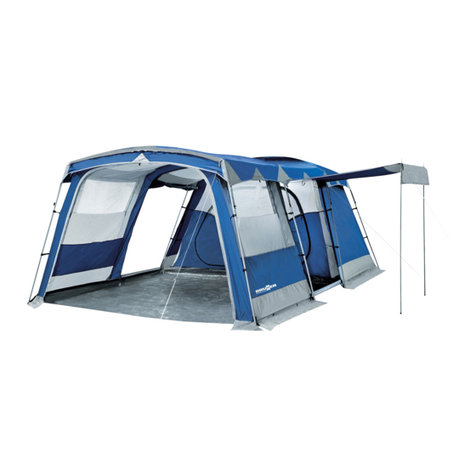
Brunner
Brunner CLIMA Pitching instructions
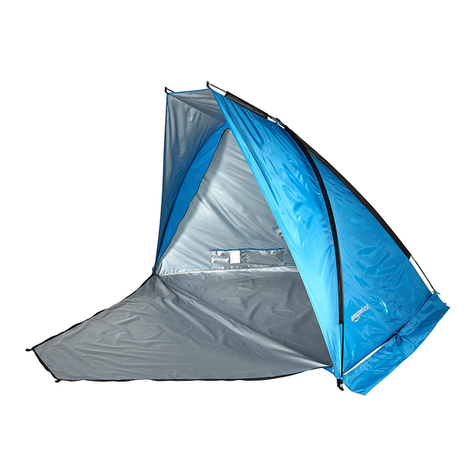
AmazonBasics
AmazonBasics B07715R57K manual

ABSCO SHEDS
ABSCO SHEDS 3060HGK Assembly & instruction manual

LEINER
LEINER WPS A3 Assembly and operating instruction
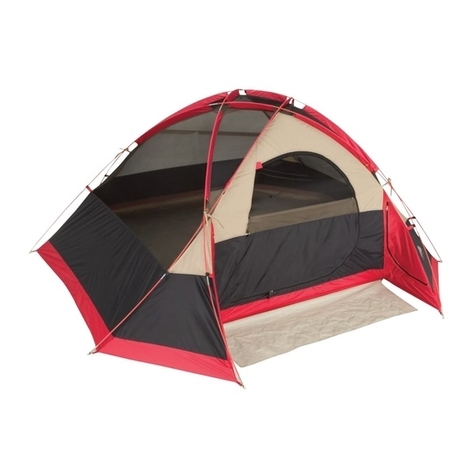
Ozark Trail
Ozark Trail WMT-9900 owner's manual
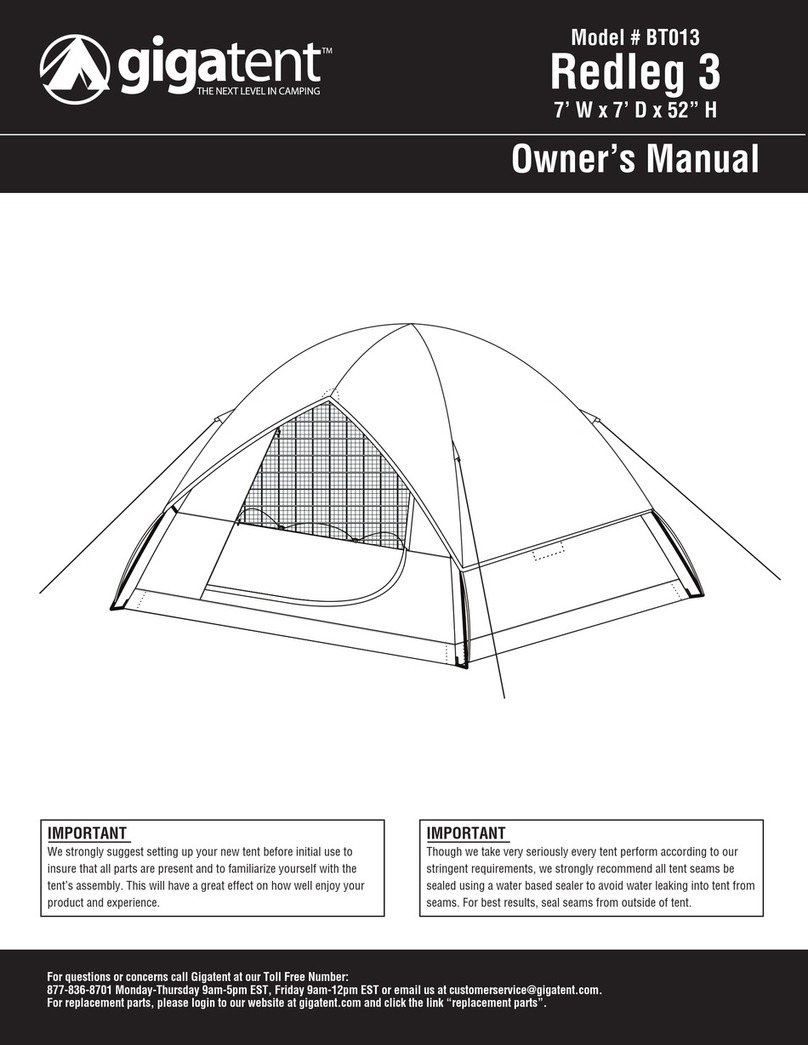
GigaTent
GigaTent Redleg 3 BT013 owner's manual

Primal Vantage
Primal Vantage HEH00591 Assembly instructions
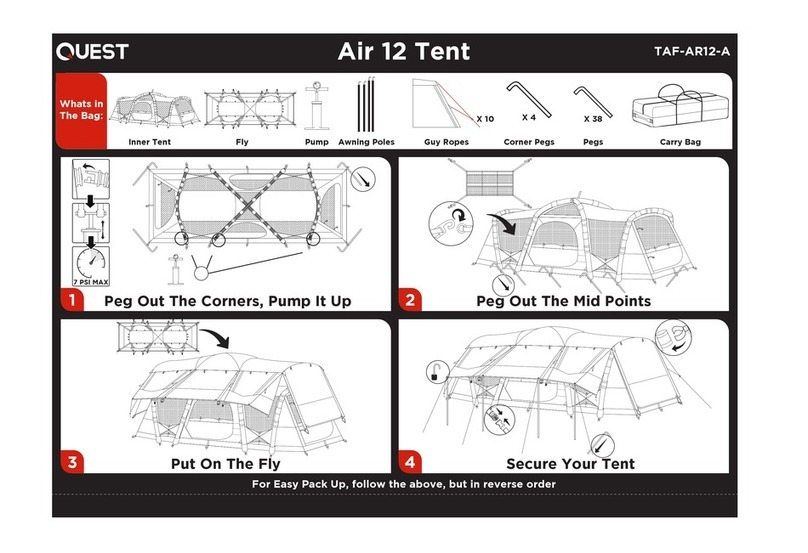
Quest Engineering
Quest Engineering Air 12 quick start guide
